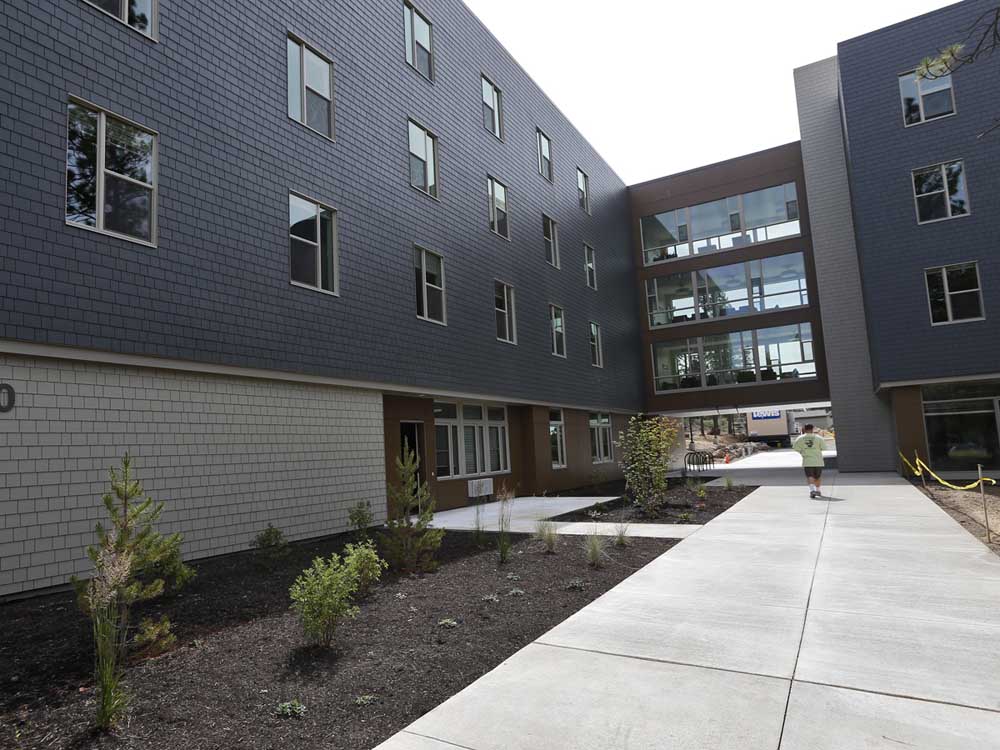Applications flow in for ‘free’ community college
Published 12:00 am Sunday, January 24, 2016

- Joe Kline / bulletin file photo The residence hall that opened in the fall at Central Oregon Community College in Bend. COCC officials likely wonít know until this spring how many students will be coming to the school next year under Oregon Promise.
With more than a month to go before the application window closes, community colleges across Oregon are waiting to see how much “free” tuition is worth to prospective students.
Under the new Oregon Promise program, qualifying students will receive state grants to cover their tuition at community college, and every qualified student is guaranteed at least $1,000. As of earlier this month, nearly 12,000 students had applied, though it is unclear if all those students meet the criteria and will in fact enroll at a community college in the fall.
Trending
To qualify, students must graduate from an Oregon high school in spring or summer 2016 with a 2.5 cumulative grade-point average or higher, or earn a GED in the same time.
They must also have been an Oregon resident for at least 12 months prior to enrolling in community college and do so within six months of graduating or earning a GED.
Students must accept all state and federal grants they qualify for; if tuition is covered entirely by other grants, students could use their $1,000 minimum grant for other expenses. For some, there may be costs left over, since Oregon Promise will cover the average tuition for full-time students at Oregon community colleges and some schools will charge more.
Undocumented students who fit the criteria can apply. All students will pay a $50 copay per term.
Oregon joins Tennessee and Minnesota in offering “free community college,” according to the National Conference of State Legislatures, and lawmakers in a dozen other states including Washington have looked to launch similar programs.
In Tennessee, about half of students who were awarded grants didn’t use them, and Oregon officials are anticipating similar results.
Trending
“I don’t think anybody is going to see huge numbers. Statewide we’re expecting 7,000 qualified applicants for Oregon Promise, and probably 5,000 of them would have gone to community college anyway,” said Bob Brew, executive director of the state Office of Student Access and Completion, which will administer the grants.
Brew said based on applications so far, he expects to hit that 7,000 number. The Legislature approved $10 million for grants for the 2016-17 school year.
Officials at Central Oregon Community College likely won’t know until this spring how many students will be coming to them next year under Oregon Promise. Recruiters have been talking the program up with prospective students, said Kevin Multop, COCC’s financial aid director.
“Because it’s the first year, we honestly don’t know. We’re hopeful it will generate a lot of enthusiasm and excitement to attend COCC in the fall,” he said.
The college has seen enrollment decline in recent years after hitting a peak during the economic downturn. Multop said it is hard to say how many COCC students in past years would have fit the Oregon Promise criteria, since the college does not require students to submit their high school transcript or GPA.
“We definitely welcome any boost. As far as the capacity to accommodate these students, I think the college is definitely in a position where we can do that,” Multop said.
Oregon Promise was designed as a possible replacement to fifth-year programs, where high schools across the state kept graduates on their books for one year and covered the students’ tuition at community colleges. In Central Oregon, schools in Redmond, Prineville and Madras offer such programs, but opponents objected to the premise of money for K-12 schools going to community colleges.
The Legislature last year approved a one-year moratorium on expanding such programs, and local high schools this year are pointing students toward Oregon Promise instead.
“Our kids are so used to the advanced diploma option that we used to have, so this is a transition time for us to make sure they know the difference,” said Kris Davis, an academic counselor at Redmond High School, where about 30 percent of graduates go to community college. “Parents and students are still trying to figure out what it all means.”
The biggest difference for students is that they apply through the state, not the school district, and that they must accept all financial aid. At Redmond, fifth-year students forfeited all financial aid, but Oregon Promise is designed to cover what other financial aid does not.
Another unknown: whether Oregon Promise grants could go to dually admitted students, those who take classes at community colleges and four-year schools. At Oregon State University-Cascades in Bend, which started enrolling freshmen in the fall, all undergraduates are dually admitted at COCC.
This is only the campus’ second year recruiting students out of high schools, and Oregon Promise has the potential to steer students that may have enrolled at OSU-Cascades toward community college for their first year. OSU officials instead are talking about other grants that help cover tuition and fees for low-income students.
“Certainly some first-year students are thinking about it,” said Jane Reynolds, OSU-Cascades’ director of enrollment services. “We want to make sure they don’t miss out, that Oregon Promise isn’t the only way to fund your education.”
To apply for Oregon Promise, a student must complete an application online at www.oregonpromise.com by March 1, and complete the Free Application for Federal Student Aid, or FAFSA, at fafsa.ed.gov.
— Reporter: 541-617-7837,
aspegman@bendbulletin.com








